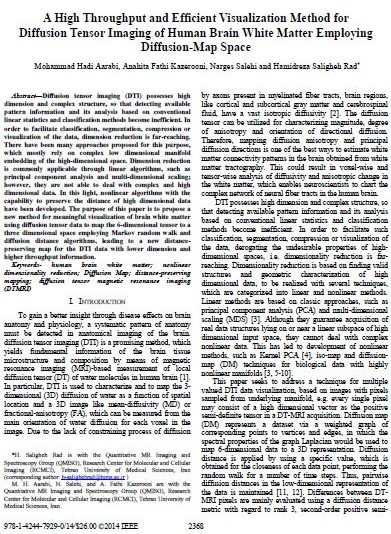A High Throughput and Efficient Visualization Method for Diffusion Tensor Imaging of Human Brain Employing Diffusion-Map Space
Abstract
Diffusion tensor imaging (DTI) possesses high dimension and complex structure, so that detecting available pattern information and its analysis based on conventional linear statistics and classification methods become inefficient. In order to facilitate classification, segmentation, compression or visualization of the data, dimension reduction is far-reaching. There have been many approaches proposed for this purpose, which mostly rely on complex low dimensional manifold embedding of the high-dimensional space. Dimension reduction is commonly applicable through linear algorithms, such as principal component analysis and multi-dimensional scaling; however, they are not able to deal with complex and high dimensional data. In this light, nonlinear algorithms with the capability to preserve the distance of high dimensional data have been developed. The purpose of this paper is to propose a new method for meaningful visualization of brain white matter using diffusion tensor data to map the 6-dimensional tensor to a three dimensional space employing Markov random walk and diffusion distance algorithms, leading to a new distance-preserving map for the DTI data with lower dimension and higher throughput information.

